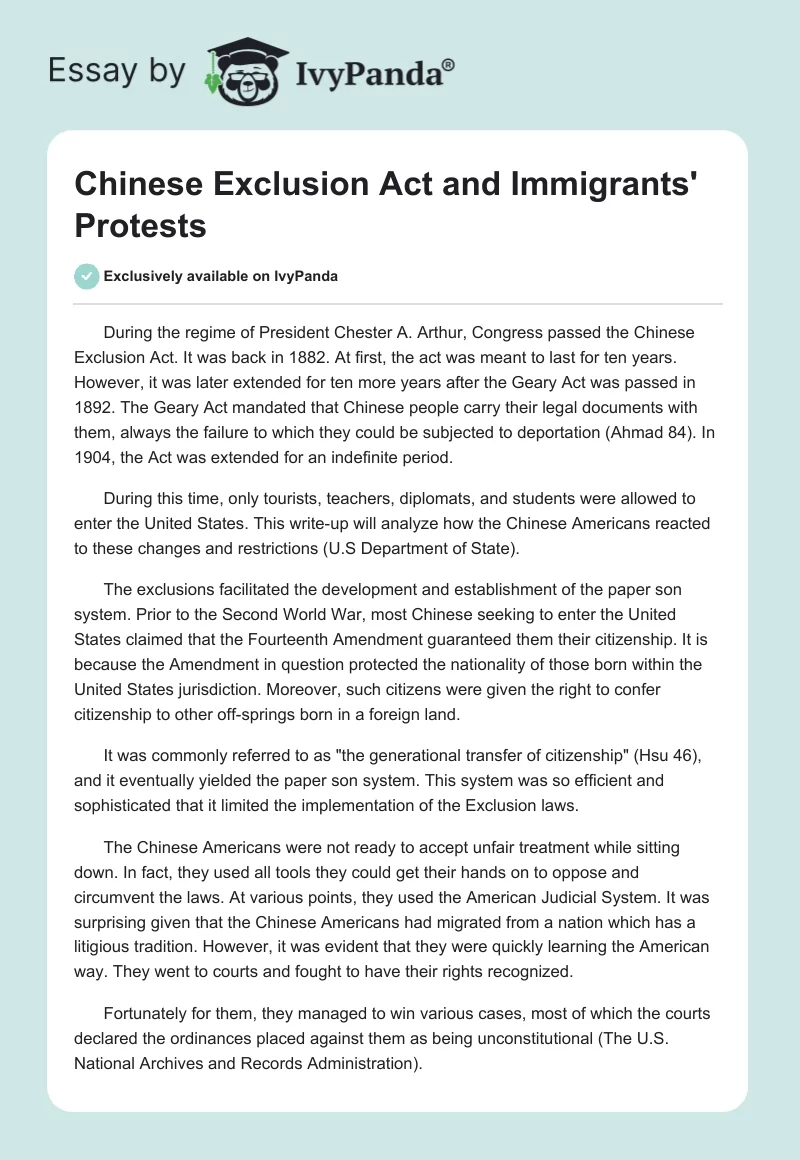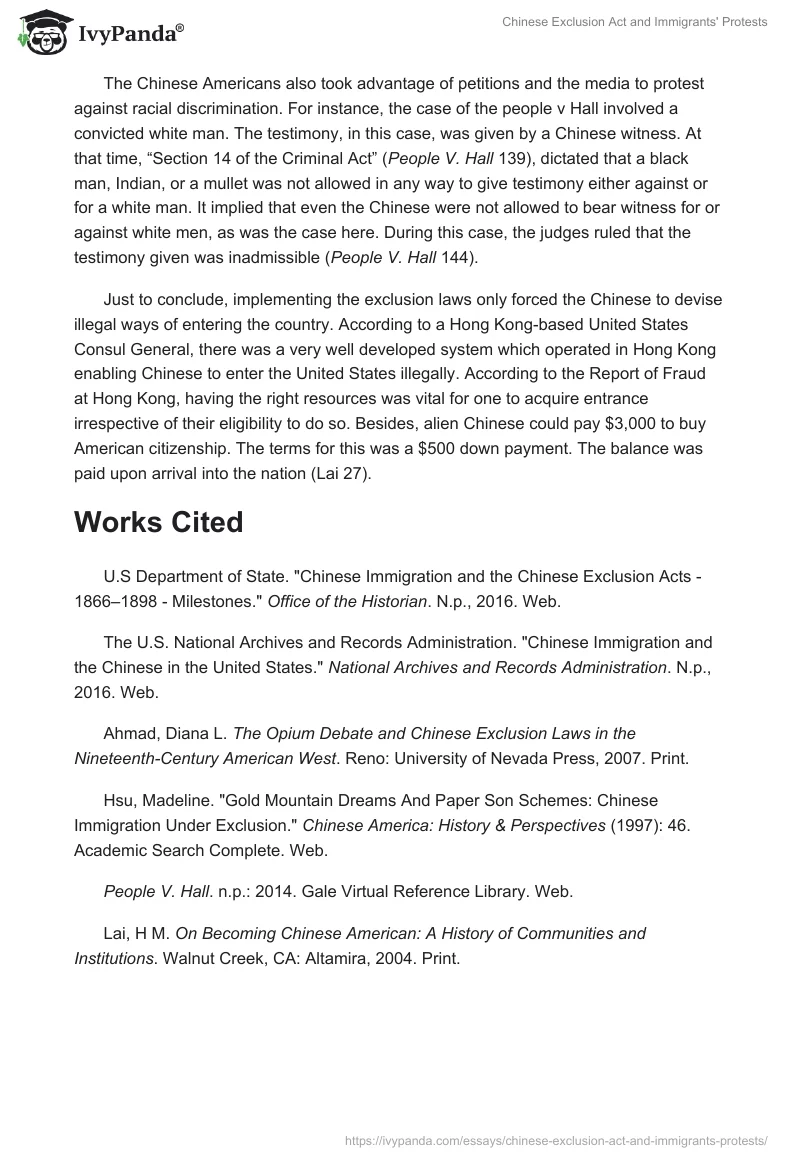During the regime of President Chester A. Arthur, Congress passed the Chinese Exclusion Act. It was back in 1882. At first, the act was meant to last for ten years. However, it was later extended for ten more years after the Geary Act was passed in 1892. The Geary Act mandated that Chinese people carry their legal documents with them, always the failure to which they could be subjected to deportation (Ahmad 84). In 1904, the Act was extended for an indefinite period.
During this time, only tourists, teachers, diplomats, and students were allowed to enter the United States. This write-up will analyze how the Chinese Americans reacted to these changes and restrictions (U.S Department of State).
The exclusions facilitated the development and establishment of the paper son system. Prior to the Second World War, most Chinese seeking to enter the United States claimed that the Fourteenth Amendment guaranteed them their citizenship. It is because the Amendment in question protected the nationality of those born within the United States jurisdiction. Moreover, such citizens were given the right to confer citizenship to other off-springs born in a foreign land.
It was commonly referred to as “the generational transfer of citizenship” (Hsu 46), and it eventually yielded the paper son system. This system was so efficient and sophisticated that it limited the implementation of the Exclusion laws.
The Chinese Americans were not ready to accept unfair treatment while sitting down. In fact, they used all tools they could get their hands on to oppose and circumvent the laws. At various points, they used the American Judicial System. It was surprising given that the Chinese Americans had migrated from a nation which has a litigious tradition. However, it was evident that they were quickly learning the American way. They went to courts and fought to have their rights recognized.
Fortunately for them, they managed to win various cases, most of which the courts declared the ordinances placed against them as being unconstitutional (The U.S. National Archives and Records Administration).
The Chinese Americans also took advantage of petitions and the media to protest against racial discrimination. For instance, the case of the people v Hall involved a convicted white man. The testimony, in this case, was given by a Chinese witness. At that time, “Section 14 of the Criminal Act” (People V. Hall 139), dictated that a black man, Indian, or a mullet was not allowed in any way to give testimony either against or for a white man. It implied that even the Chinese were not allowed to bear witness for or against white men, as was the case here. During this case, the judges ruled that the testimony given was inadmissible (People V. Hall 144).
Just to conclude, implementing the exclusion laws only forced the Chinese to devise illegal ways of entering the country. According to a Hong Kong-based United States Consul General, there was a very well developed system which operated in Hong Kong enabling Chinese to enter the United States illegally. According to the Report of Fraud at Hong Kong, having the right resources was vital for one to acquire entrance irrespective of their eligibility to do so. Besides, alien Chinese could pay $3,000 to buy American citizenship. The terms for this was a $500 down payment. The balance was paid upon arrival into the nation (Lai 27).
Works Cited
U.S Department of State. “Chinese Immigration and the Chinese Exclusion Acts – 1866–1898 – Milestones.” Office of the Historian. N.p., 2016. Web.
The U.S. National Archives and Records Administration. “Chinese Immigration and the Chinese in the United States.” National Archives and Records Administration. N.p., 2016. Web.
Ahmad, Diana L. The Opium Debate and Chinese Exclusion Laws in the Nineteenth-Century American West. Reno: University of Nevada Press, 2007. Print.
Hsu, Madeline. “Gold Mountain Dreams And Paper Son Schemes: Chinese Immigration Under Exclusion.” Chinese America: History & Perspectives (1997): 46. Academic Search Complete. Web.
People V. Hall. n.p.: 2014. Gale Virtual Reference Library. Web.
Lai, H M. On Becoming Chinese American: A History of Communities and Institutions. Walnut Creek, CA: Altamira, 2004. Print.


